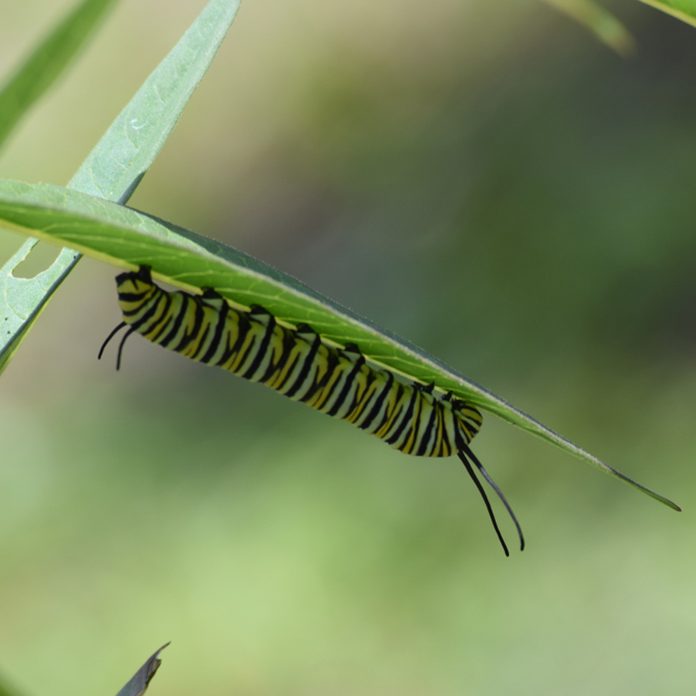
Caterpillars
That cute little crawler may not be as cuddly as you think. “They may have defensive and offensive mechanisms that allow them to survive in the wild,” says Sydney Crawley, a public health entomologist and consultant for Scotts Miracle-Gro. “For example, some very pretty, seemingly innocuous caterpillars have urticating hairs that contain poison that may pierce the skin and cause pain and other adverse reactions. If you are not familiar with an insect, it is best to leave it alone.”
Watch out for these 10 dangerous bugs this summer.
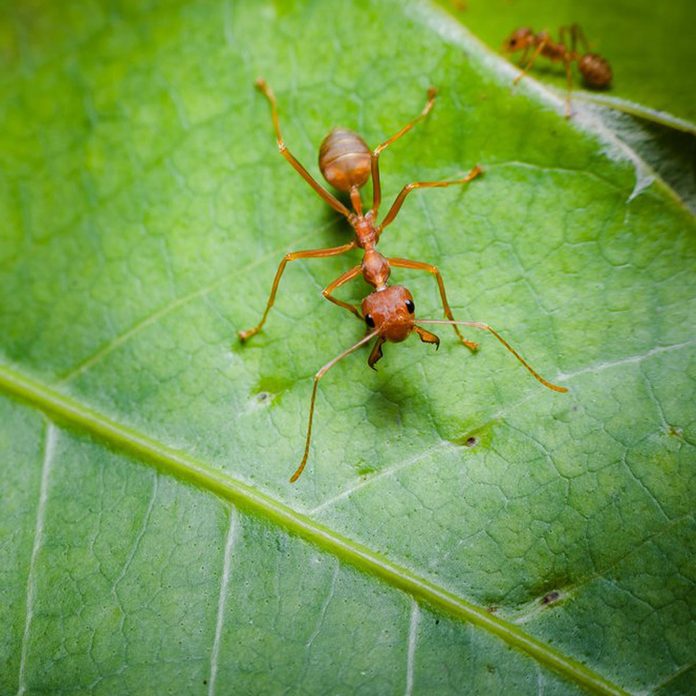
Ants
Fire ants—which give multiple painful stings if you happen to come across them—aren’t the only member of the ant family who could bite. However, it is rare for other ants to take a nibble. “Most common household ant species do not bite humans, with the exception of the carpenter ant,” Smith says. “When a carpenter ant nest is disturbed, the ants can break the skin with their painful bite. The carpenter ant sprays the open bite with formic acid, and that increases the pain of the bite.” Wiping up food and drink spills can go a long way toward making your home less attractive to ants. And don’t forget about bed bugs. Here’s how to get rid of them yourself.
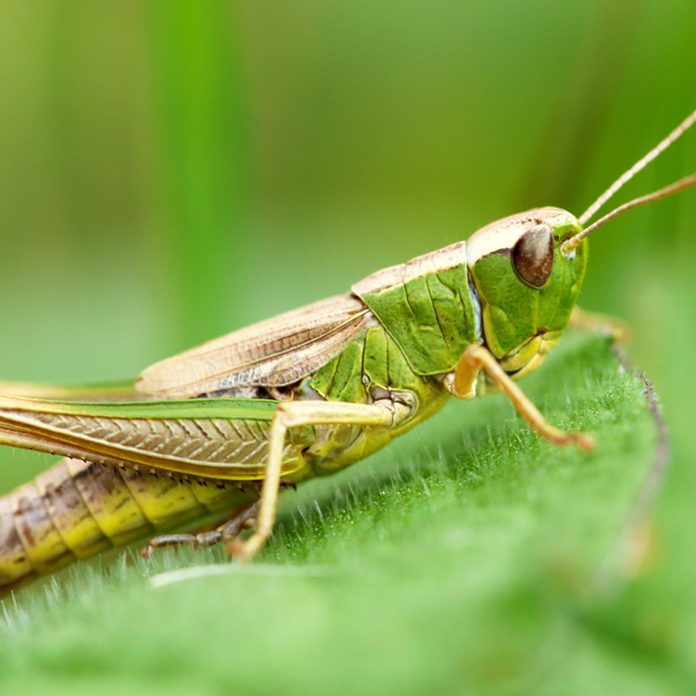
Grasshoppers
These cute little green bugs are super tempting too hold—but if you squeeze them too tight, they might bite. “A grasshopper may bite if it is being held too tightly or feels threatened,” Crawley says. Additionally, spines on the legs of a grasshopper may cause irritation when pressed into the skin, which would most likely result from tight grasping. You can avoid getting bitten by observing grasshoppers from a distance—or holding them very gently with open palms if you really want to pick one up. If you do get bitten, your skin might be mildly irritated—but a little antiseptic will help, he says.
Psst! This is why Shark tank loves First Saturday Lime to keep bugs at bay.
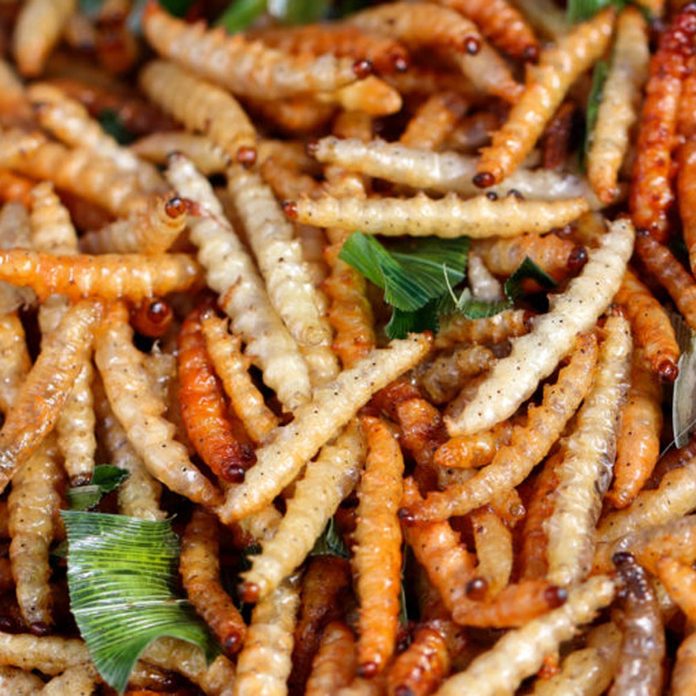
Mealworms
Commonly fed to insect-eating reptiles people keep as pets, these insect larvae can make tiny little bites in your skin. “People who work with mealworms and superworms (another type of mealworm) get bit thousands of times, enough to have raw, reddened skin,” says James Daniel Ricci, an entomologist, and the co-founder and CTO of Ovipost, a company that produces automation equipment for rearing insects. “Only the very largest beetle grubs in the world are actually capable of doing too much damage or even drawing blood.” These 10 bug repellents are made with natural ingredients.
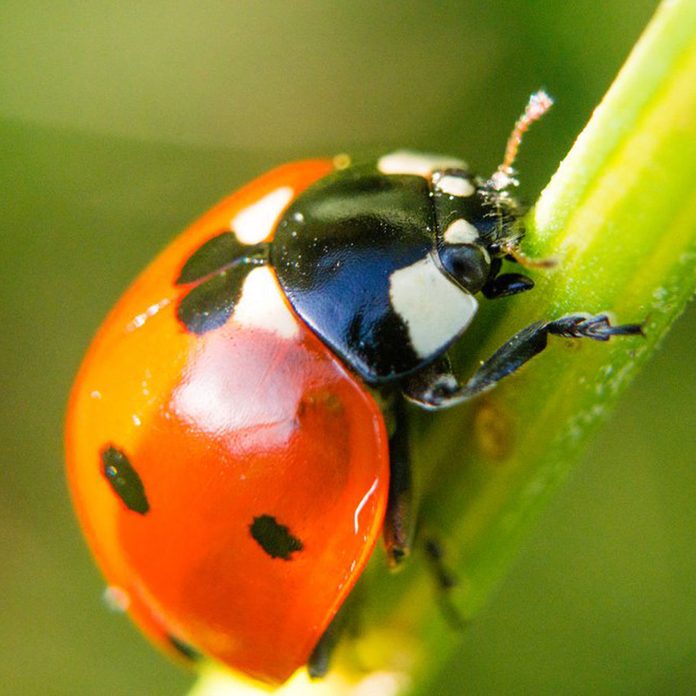
Ladybugs
Those adorable little red bugs could give you a tiny (and pretty painless) nip. “Ladybugs may bite, but their jaws are very small and it would feel like a tiny pinch at worst, and it would be almost impossible to break human skin,” says Joseph Spagna, PhD, William Paterson University associate professor of biology. “Ladybugs are ecologically helpful—they spend their days eating plant-damaging insects like aphids in large numbers. Being gentle with them when they land on you is about all you would need to do to stay on 100 percent-friendly terms.”

Beetles
“Larger beetles, like large stag beetles, can do some damage with their massive mouthparts, usually when they feel threatened or if they’re trying to steady themselves,” Ricci says. “Usually this is pretty mild, barely more than a stubbed toe or a pinprick. Ice the area if it’s at all bruised and use a bandage if necessary.”
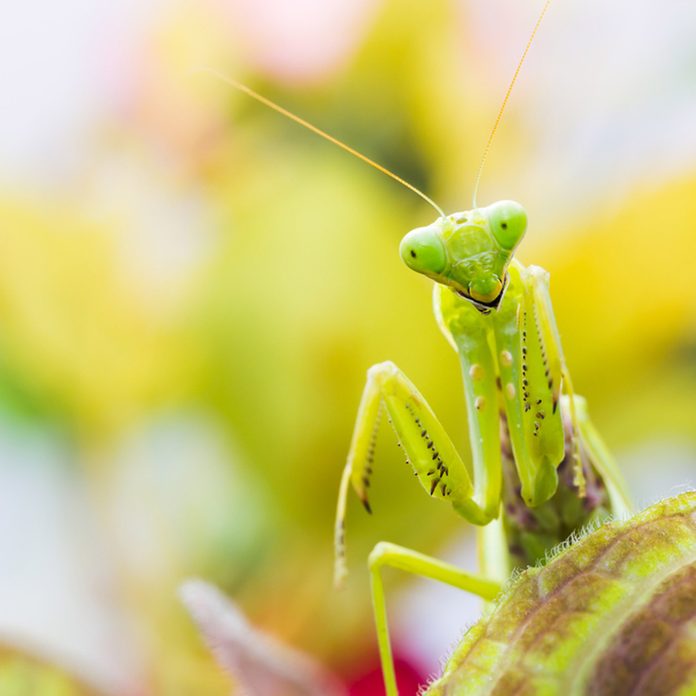
Praying Mantis
These bugs are famous for eating lots of garden pests and biting off the heads of their mates—but their jaws could put a pinch on you, too. “Praying mantises are non-threatening, carnivorous insects that are typically disinterested in humans,” says Crawley. “However, when they perceive a threat, they are capable of biting or using their powerful forelegs lined with spikes as a defense mechanism. Mantids may perceive humans as a threat if they move very quickly toward them or grasp them tightly. Their bite or pinch is enough to break human skin and may be painful. If you must hold one, move slowly and keep an open palm, and preferably allow them to walk toward you. If bitten, gentle cleansing and treatment with an antiseptic should be sufficient,” he says. Here are the best strategies for DIY pest control.
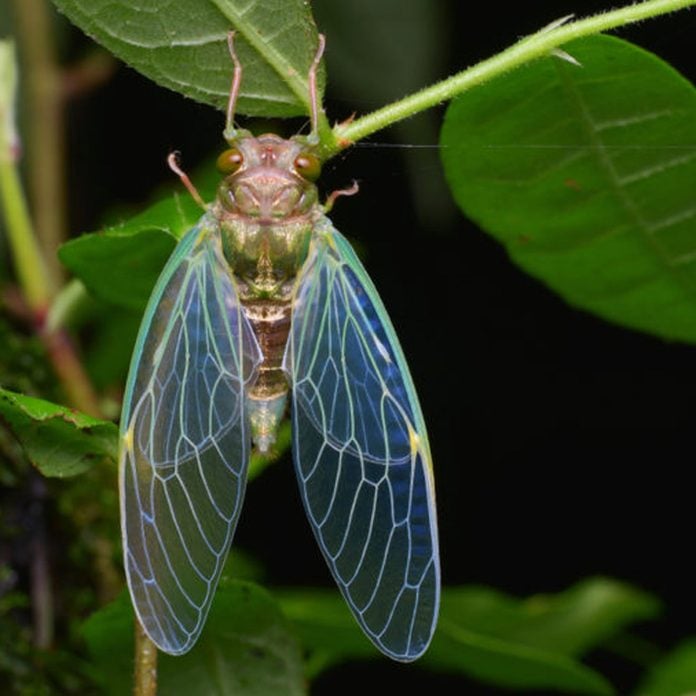
Cicadas
These loud and large bugs generally won’t bite people with their thin, sucker-like mouths—unless, of course, you hold on to them a bit too long. Keep your distance, and you should be fine. Learn how many bugs you might be eating—and you don’t even know it!
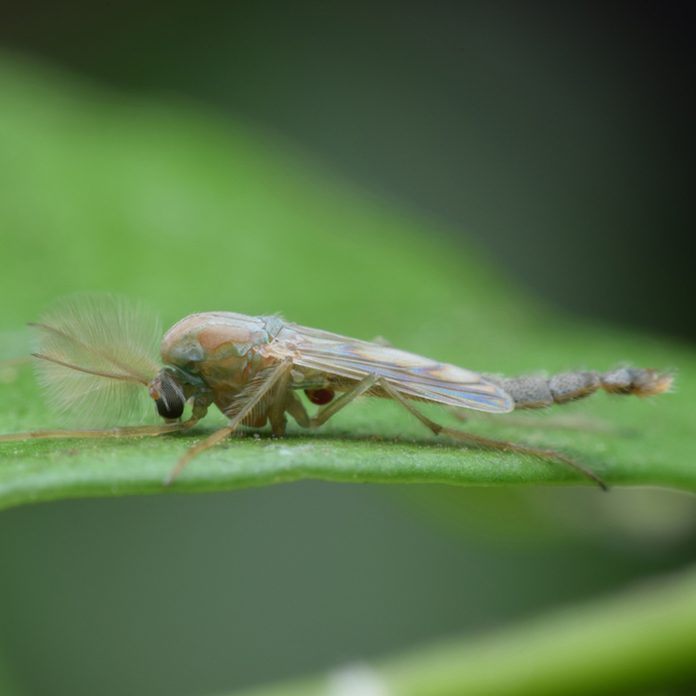
Gnats
Most gnats are just a big nuisance. But a tiny, gnat-like fly called a biting midge (you might know them as “no-see-ums”) can make tiny bites that can burn and leave big red welts. If you’re in an area where they’re common, you’ll need a fine mesh screen on your windows and doors to help keep the no-see-ums out.
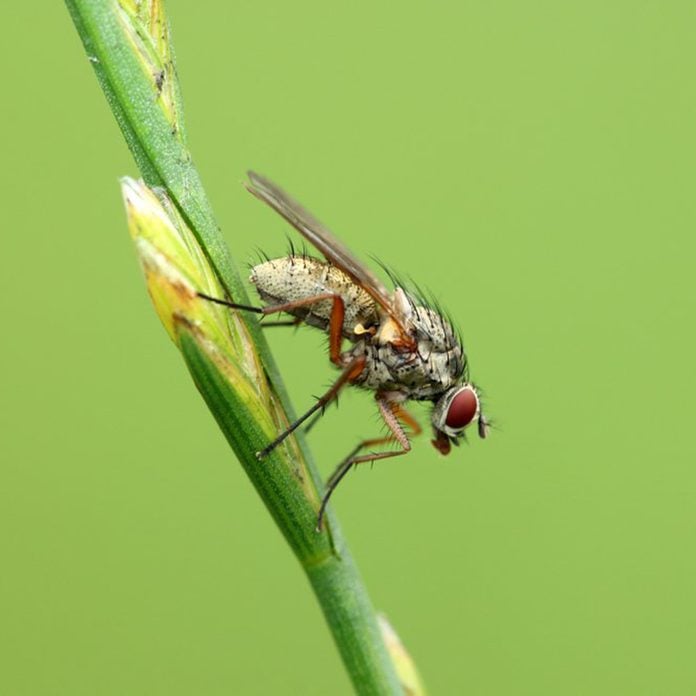
Flies
The standard housefly rarely bites, but he has a lot of nippy cousins. “There are many different types of biting flies: deer flies, horse flies, stable flies, and black flies,” says Crawley. “Regardless of species, they all have one thing in common—they’re out for blood. What’s more, coming inside isn’t even a guarantee that you’re safe from biting flies, since they can get inside your home.” Running a fan can help you keep these pests away.
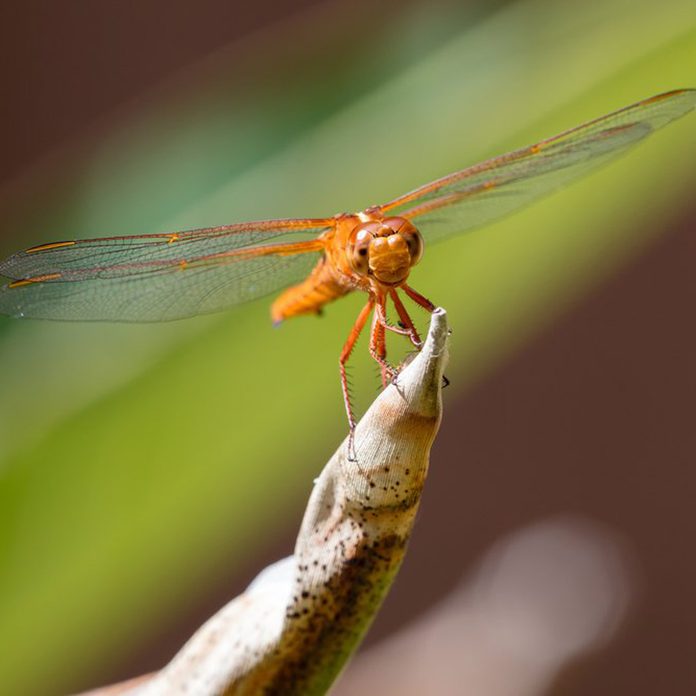
Dragonflies
Dragonflies don’t buzz around looking for humans to bite—but if you’re another bug, watch out. “Dragonflies have powerful biting mouthparts that are primarily used for capturing mosquitoes, midges, and flies as a food source,” Smith says. “Dragonflies will not bite humans in most cases, but the rare exception may occur when handling a live dragonfly; they may bite you as a means of self-defense.” You need to see these insane pest control ideas.

Crickets
Some species of crickets, such as the Jerusalem cricket, are capable of biting humans if provoked. Still, it’s rare for these critters to bite. “The cricket species kids run into in North America are basically harmless,” Spagna says. “I handle the common ‘house cricket’ Acheta domesticus in my behavior classes regularly, with bare hands, and they have never bitten me.”
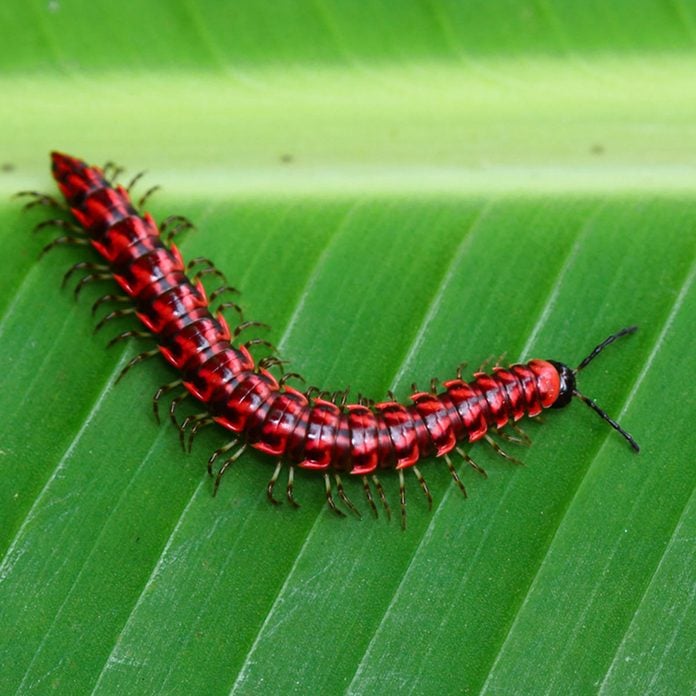
Millipedes
“It’s not an insect, but millipedes, the friendly, docile relative of the centipedes, can hurt humans when they’re threatened,” Ricci says. “The yellow-spotted millipede will curl into a ball when threatened, and leak hydrogen cyanide, a strong poison, onto the person holding it. This isn’t usually enough to kill a human, but you definitely should wash your hands thoroughly and avoid touching your face or eating food immediately after!” Plus: Check out these 26 tips for controlling pests in and around your home.
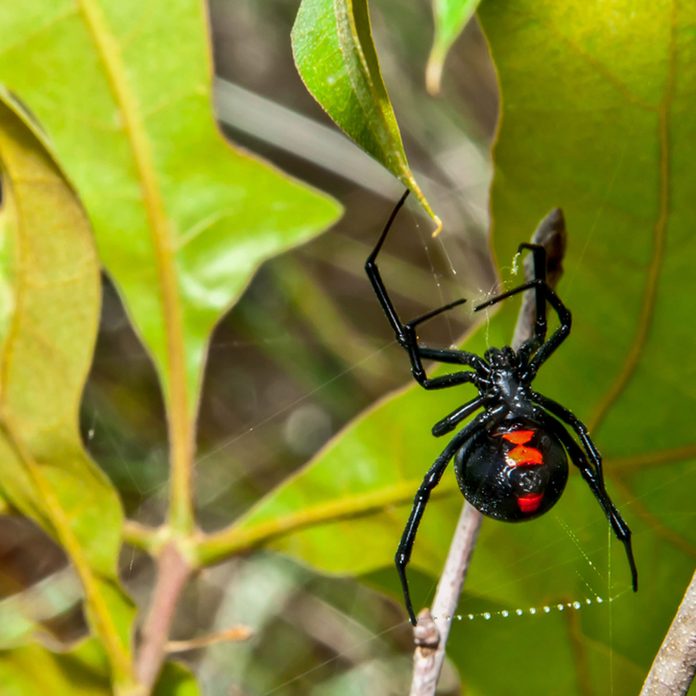
Spiders
Spiders get a bad rap, considering their very important role in helping keep the bug population in check. Spider bites are rare—they won’t bite unless they feel threatened and in the United States, other than the brown recluse and the black widow, spiders bites are harmless. “My students have shared with me many myths about ‘the most dangerous insect’ or the ‘most venomous spider,’” says Dr. Spagna. “These are not just mostly wrong—they tend to be wildly wrong! People generally overestimate the danger of things that give them a creepy feeling.” They’re not only helpful, spiders make the most incredible webs—just check these examples out. Plus: These are the 10 most disgusting house bugs and how to get rid of them for good!